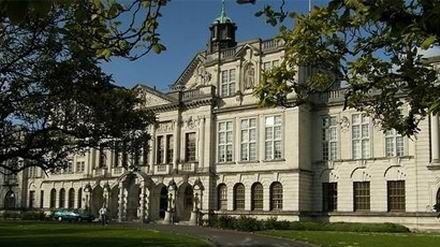1月份的托福考试就要来临,很多人对于预测题感兴趣,那么预测情况如何呢?想必是不少出国人士比较关心的问题,和出国留学网托福栏目一起来看看2018年1月28日托福听力机经预测!欢迎阅读。
2018年1月28日托福听力机经预测
Script:
Narrator: Listen to part of a lecture in a Chemistry Class
Lecturer:Of course, everyone here knows you can use a microwave oven to reheat liquids or food. Basically, microwaves produced by the oven - uh - excite molecules in the food. Especially water molecules. And - when these molecules vibrate more and more energetically and bump into the molecules all around them, the heat that’s produced will eventually warm the food. But, before you all begin your next set of experiments using microwave ovens, you also need to understand, that using microwave to heat liquids can be quite different from heating liquids in a metal pot on the stove. In a metal pot on the stove, when the liquid reaches its boiling point, it begins to boil. Bubbles of water vapour rise up to the water’s surface and pop as a result of a process called nucleation. What happens with nucleation is, you start with tiny bubbles in a liquid, and then, when you increase the temperature of the liquid to the boiling point, the liquid around the bubbles starts evaporating, turning into vapour, and moving into the bubble. As the amount of vapour in the bubbles increases, the bubbles begin to grow, slowly at first, then faster and faster, and then they rise to the surface, and pop. Okay, but where do those tiny bubbles come from in the first place, so that nucleation can begin? Well, most metal pots are not totally smooth inside. They have a lot of tiny scratches and dents. And when you pour water into a pot, the water doesn’t completely fill those scratches and dents, so air gets trapped in there and forms those tiny bubbles. Then, when you apply heat, and the water gets hot enough to boil, those bubbles will lucreate as I just described. And, once the water begins to boil, if you keep adding heat, you’ll increase the rate of evaporation, the boiling, but you won’t increase the temperature of the water. All that added heat, will converting liquid water, into the water vapour that fills all those bubbles. But it’s different with microwave ovens, um, maybe you’ve had this experience, if you’ve ever heated up some water in a microwave to make yourself a cup of tea or instant coffee, this actually happened to me, I filled my cup with cold water and heated it in the microwave for a minute or two, when I removed the cup, the water seemed hot but it wasn’t boiling. But then I added a spoonful of instant coffee, and suddenly, the hot water just exploded erupted you could say. And quickly boiled away to almost nothing. Hm. What do you suppose made that happen? Well, microwave containers are usually made of - not metal of course - but a material like glass, which is very smooth - so, you don’t have all of those scratches and, indentations, and there’s no place for tiny bubbles to form. So, when you heat the water to the boiling point, there’s no nucleation. The water won’t start boiling. Instead, the water temperature just keeps rising, way above the boiling point! That’s called, superheating. Okay, so then, when I added the coffee crystals to the superheated water, it created tiny bubbles that instantly set off nucreation. Extremely rapid nucleation! And caused the bubbles of water vapour to suddenly grow large and burst in a hot mini explosion! Now, to prevent this from happening in the lab, we have precise safety procedures that we’ll all be carefully following. Okay now, we’ll be using microwave ovens to heat, and superheat not just water, but many different types of liquid containing dissolved chemicals. Some chemicals you wouldn’t want to superheat because superheating could because them to disintegrate, but with other chemicals, if we carefully raise their temperature beyond the boiling point, we can accelerate certain chemical reactions. And, by the way, that’s actually a major reason why microwave superheating holds such promise for the pharmaceutical industry, both in research and in manufacturing medicine. If certain chemical reactions can be significantly sped up, how much faster and more economically could medicines be manufactured and developed? And many pharmaceutical companies have already demonstrated in their laboratories, that microwave superheating can accelerate various chemical processes dramatically. Especially when they eliminate nucleation sites by using very smooth specially designed containers, like we’ll be using in our experiment. And, when they increase pressure inside these containers by tightly sealing them, as we’ll also be doing.



 湘公网安备 43011102001150号
湘公网安备 43011102001150号

